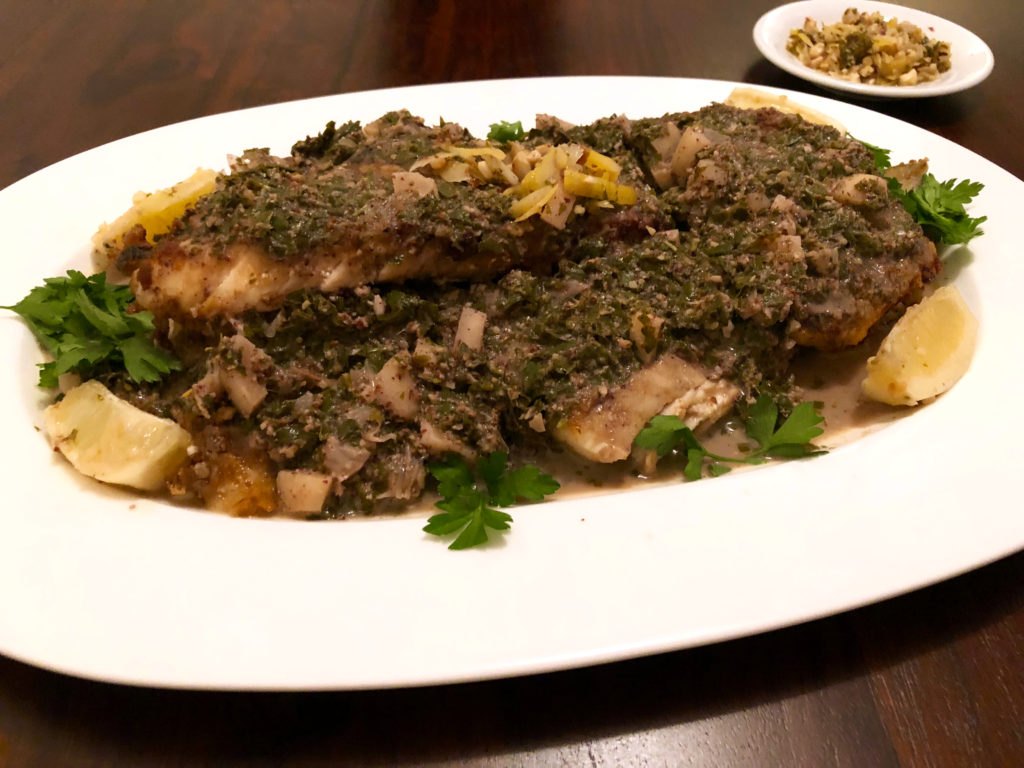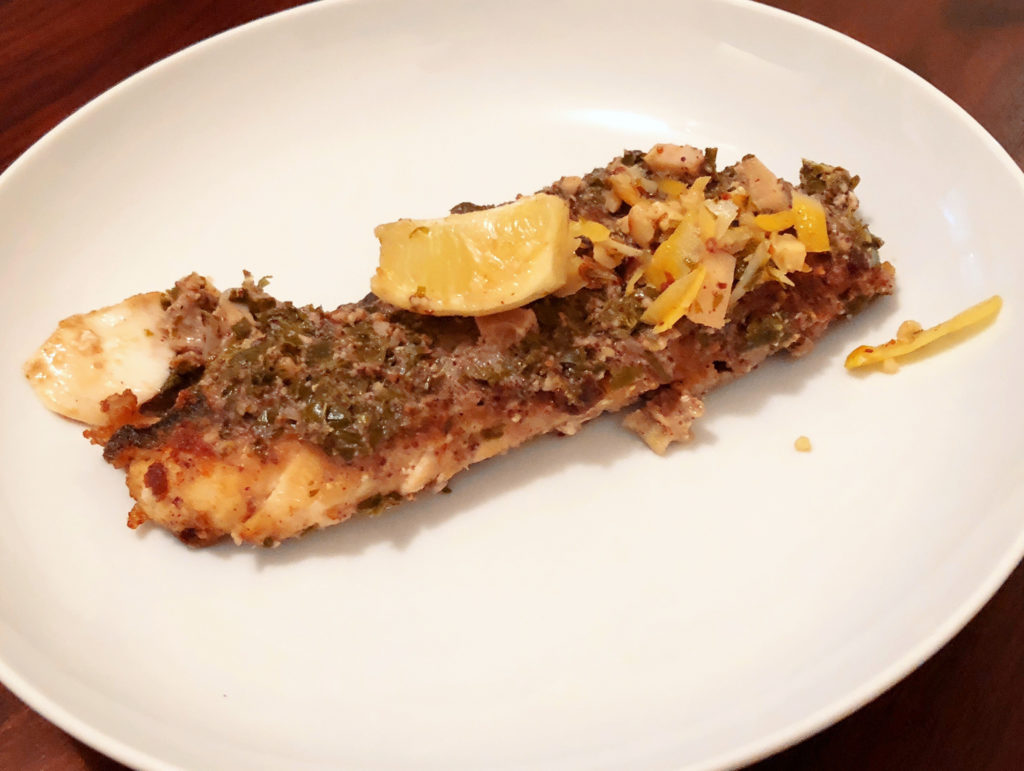For this 13th-century recipe, the fish is cleaned and dusted with flour before being fried in olive oil. Then, it is doused with a deliciously rich sauce made with crushed garlic, vinegar, parsley and mint, as well as coarsely pounded walnuts.
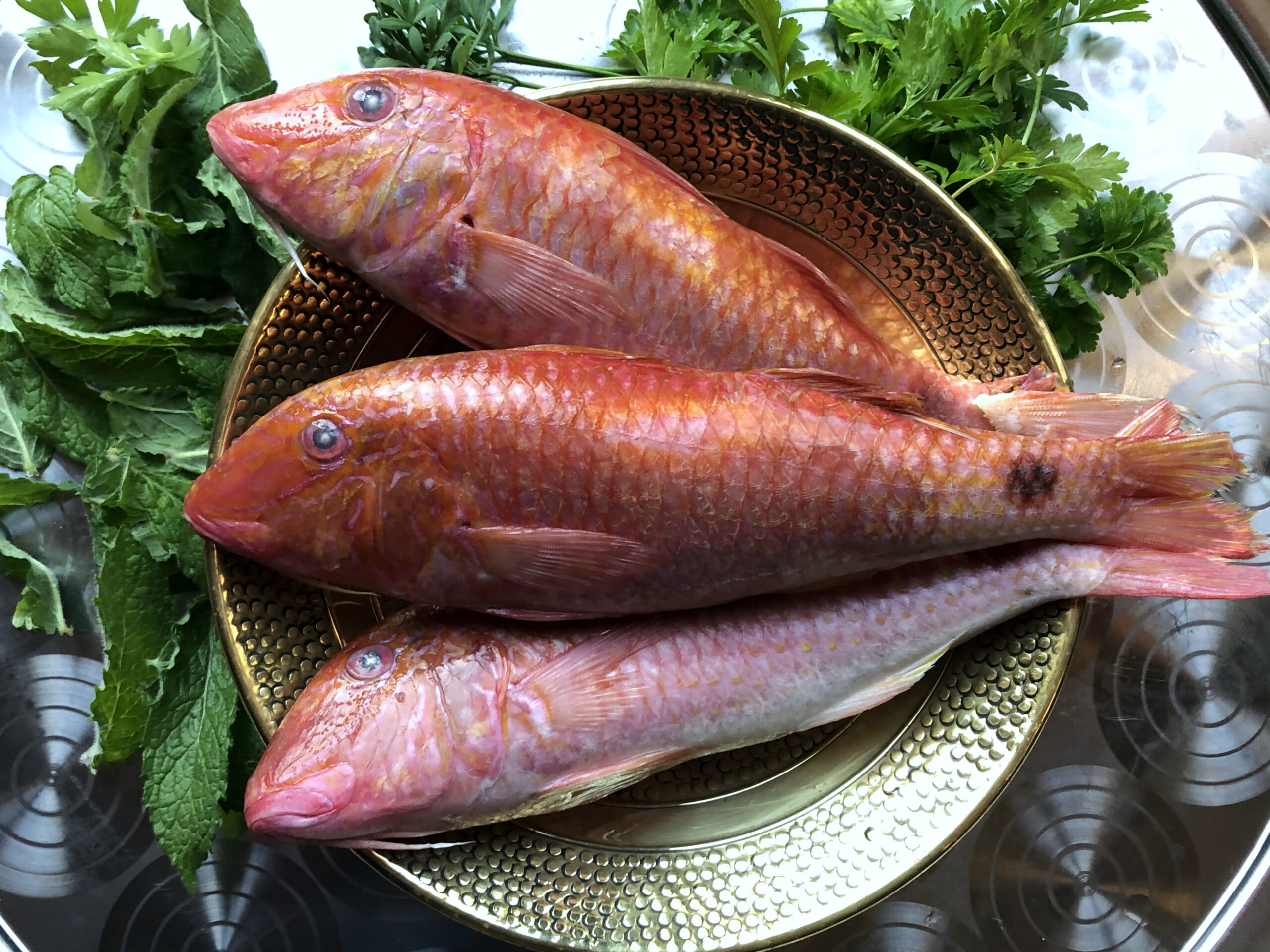
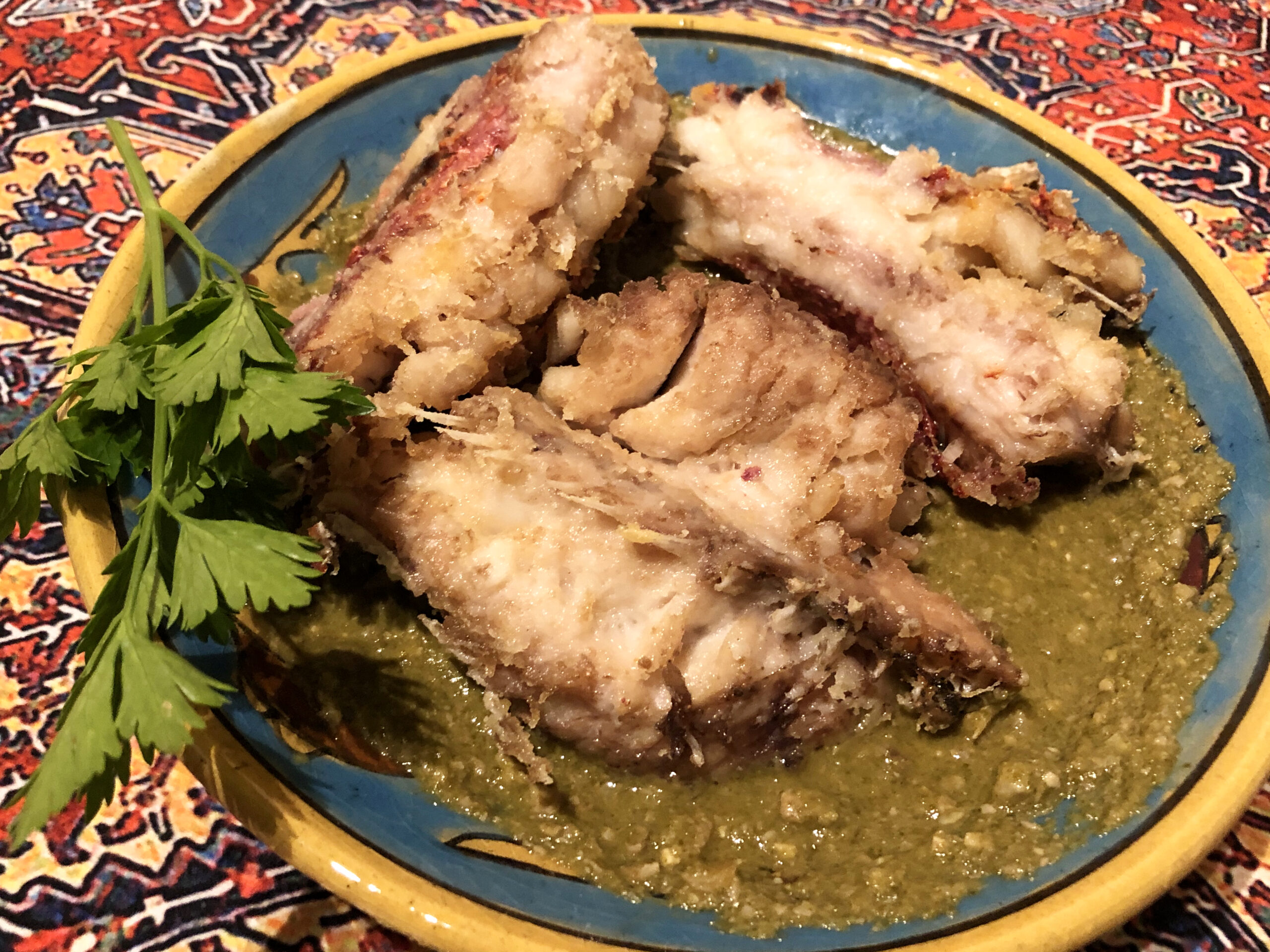

Bringing Medieval Arab Cooking to Life
For this 13th-century recipe, the fish is cleaned and dusted with flour before being fried in olive oil. Then, it is doused with a deliciously rich sauce made with crushed garlic, vinegar, parsley and mint, as well as coarsely pounded walnuts.


Tuna recipes are few and far between in the medieval culinary tradition and are found in only one cookery book, written by a 13th-century Andalusian author. This particular dish is as simple as it is delicious and involves cutting up tuna into kebab-sized pieces and then threading them on a skewer (the text specifies it should be iron, but any material will probably do!) before roasting. The tuna should be coated with salt, olive oil, murrī (use soya sauce instead), crushed garlic, pepper, and cinnamon, and cooked until golden brown. You can eat it like that, or add olive oil and some crushed cooked garlic as an accompaniment.

The recipe this week is truly an exceptional treat, since it is the only one in the Arabic culinary tradition for an eel (سلباح, silbāḥ) dish. Preparation is key and not for the faint-hearted as someone needs to scrape off the skin and gut the critter — though you can always ask your friendly local fishmonger to do the squeamish bit for you. Once that is done, it’s time to cook it in water (not too much), salt, lashings of olive oil and many of the usual goodies, like pepper, cumin, saffron, vinegar, and garlic. When the liquid has been absorbed, put it in the oven for browning. And voilà, ‘eel à l’andalouse‘ 13th-century style! As the author of the cookery book tends to say at the end of each recipe: Eat and enjoy! For accompaniment, keep it simple with some fine olives and bread.
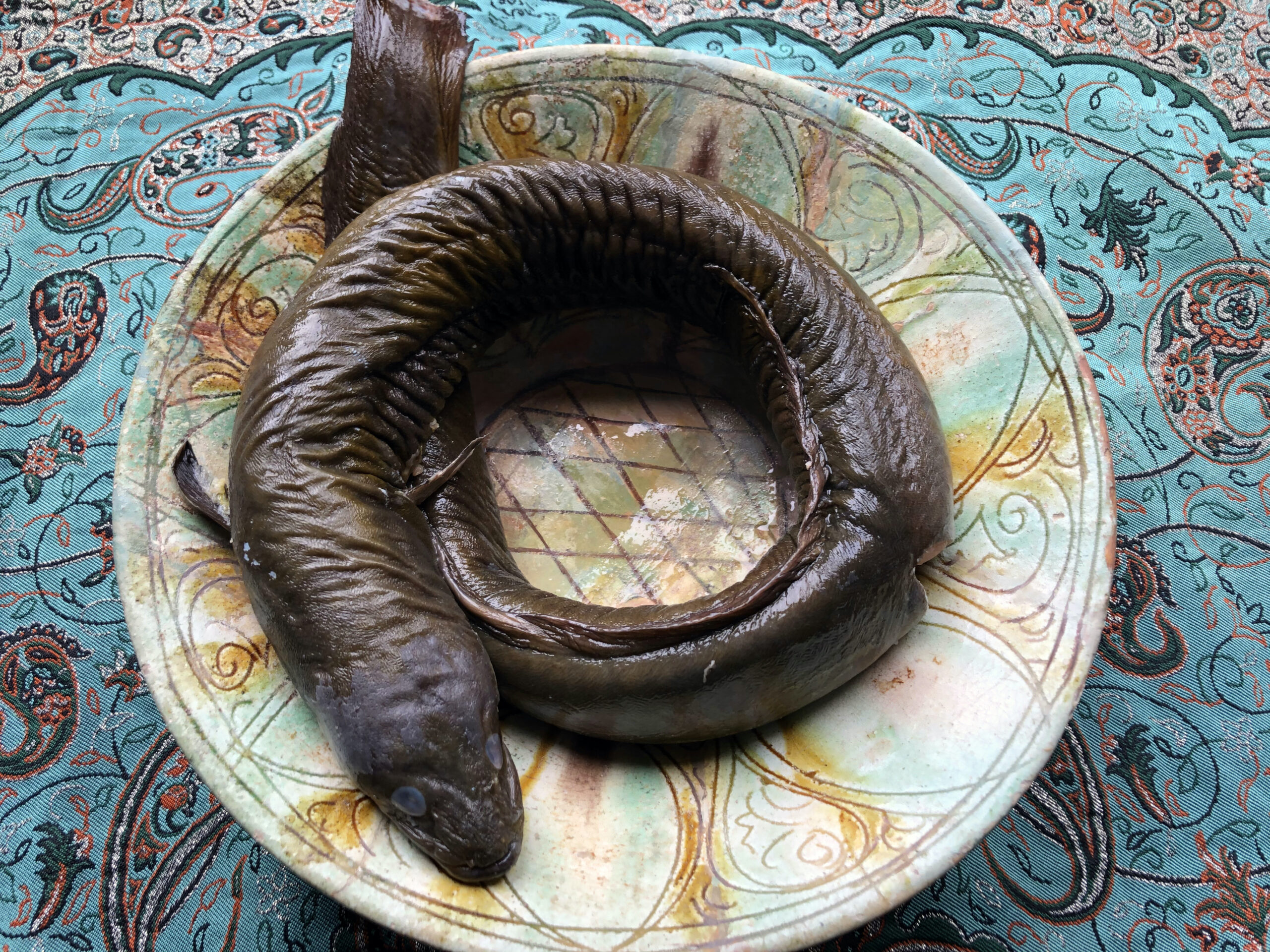
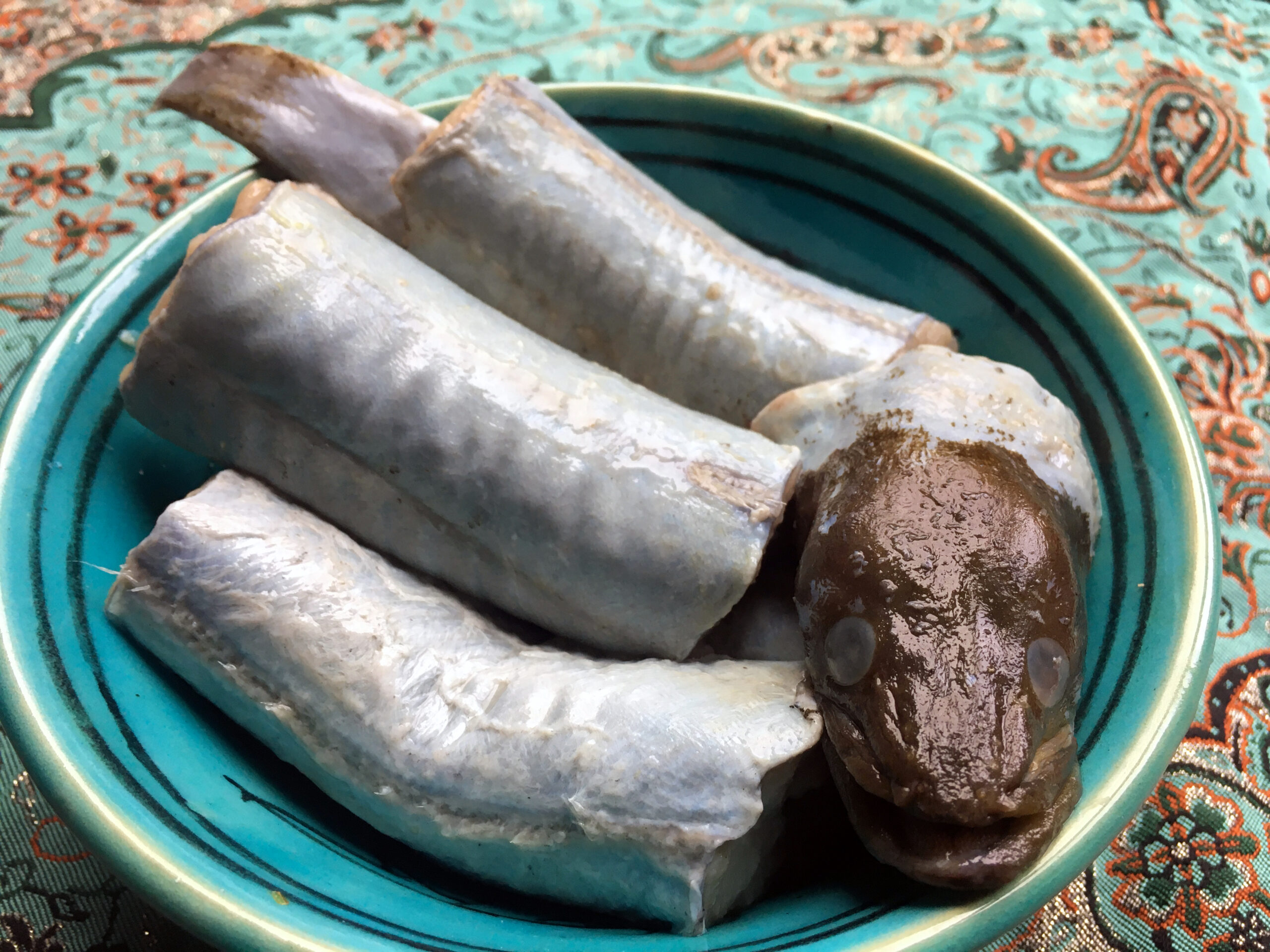
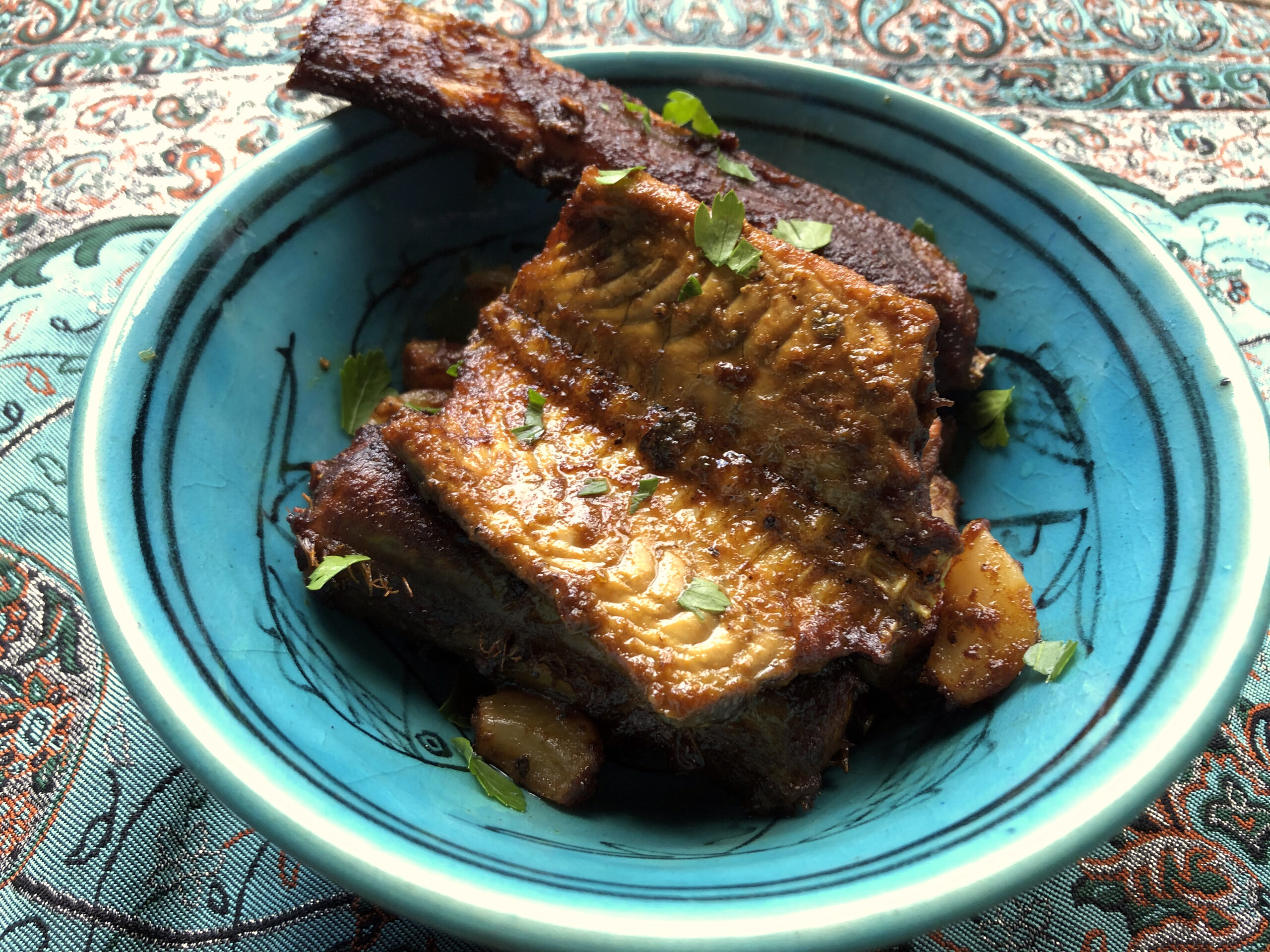
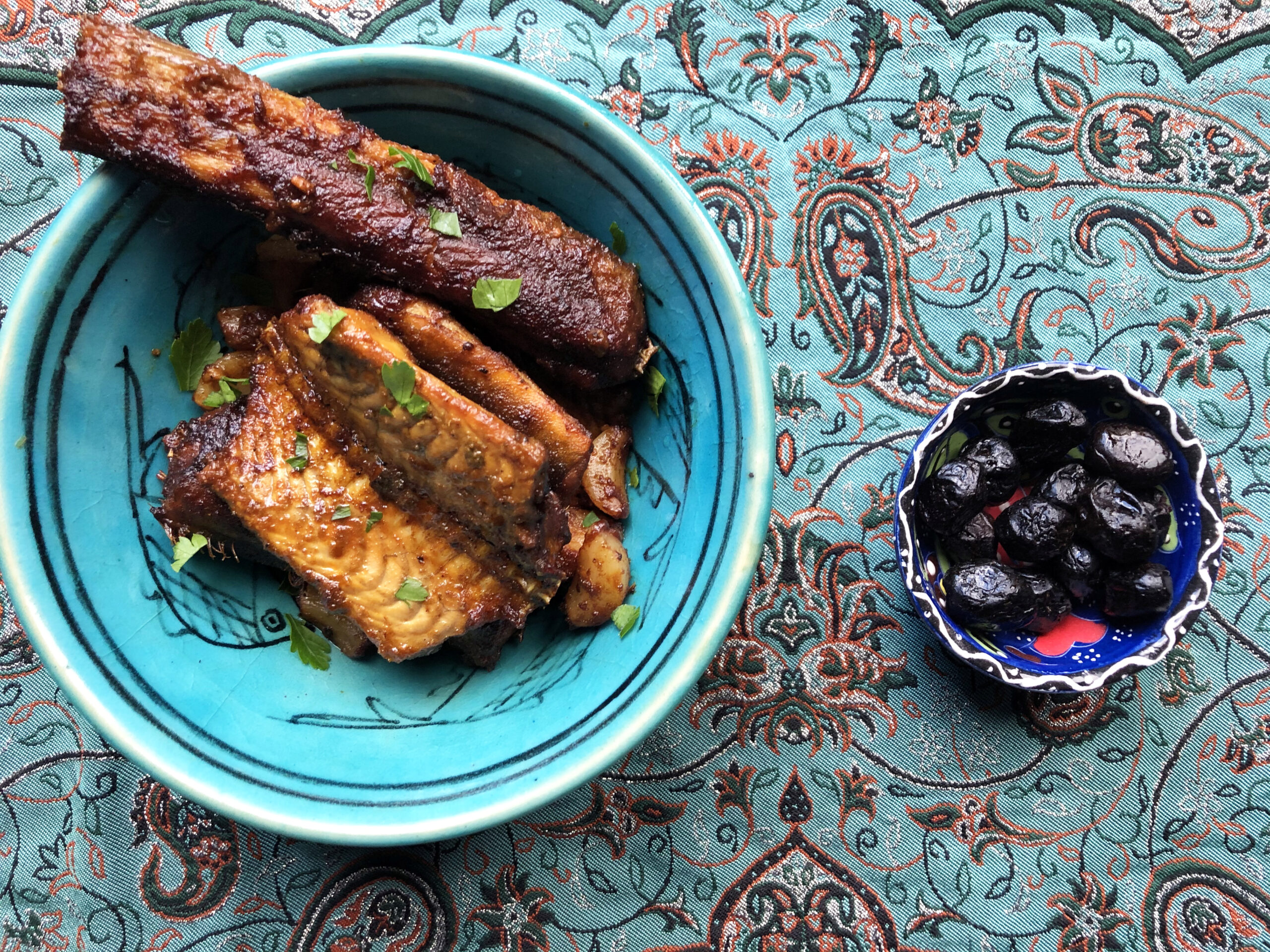
A delicious fish recipe by the 13th-century Andalusian exile in Tunisia, Ibn Razīn al-Tujībī. It involves garnishing fried fish with… another fish. The garnish is made by mashing fish meat and then mixing it with flour, salt, and pepper. This mixture is then shaped into balls which are cooked with pepper, dried coriander, coriander juice, oregano, and crushed garlic. Then the dish is ‘crusted’ with breadcrumbs and eggs, on top of which you add yolks for decoration. Once you have fried some fish, the fish balls and other ingredients are arranged over them. It goes wonderfully well with the recently made bread.
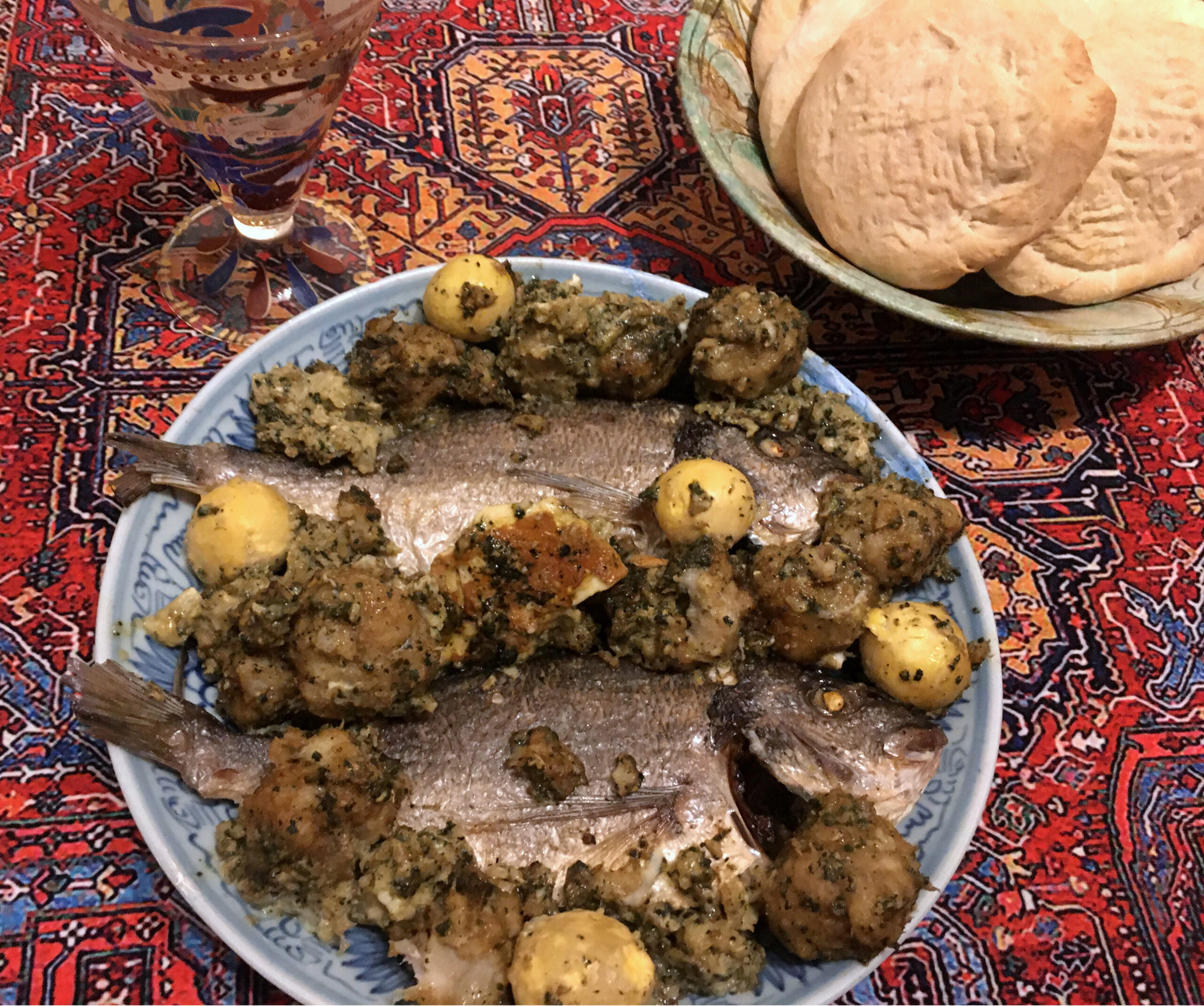
Known as ‘the protected one’ (المُغَفَّر, al-mughaffar) for reasons that will become clear, this recipe is included in the cookbook of a 13th-century Andalusian exile who settled in Tunisia. It is made with fish fillets, which are coated with a batter made of eggs and murrī (as usual, use soya sauce, instead) before coating them with flour, breadcrumbs and a number of spices, including pepper, cinnamon, ginger, coriander, and saffron. Then the fish is fried in a pan until golden brown. There is also a sauce that goes with it, which is made with vinegar, olive oil and murrī.
It is not too fanciful to link this preparation with the British ‘fish and chips’, with even the traditional accompaniment (vinegar), being included! And so, this may well be the oldest recipe for that British classic — without the chips, of course! Further proof about the historical link is provided by the fact that this method of frying fish was imported into England by Sephardic Jewish immigrants from the Iberian Peninsula in the 16th century.
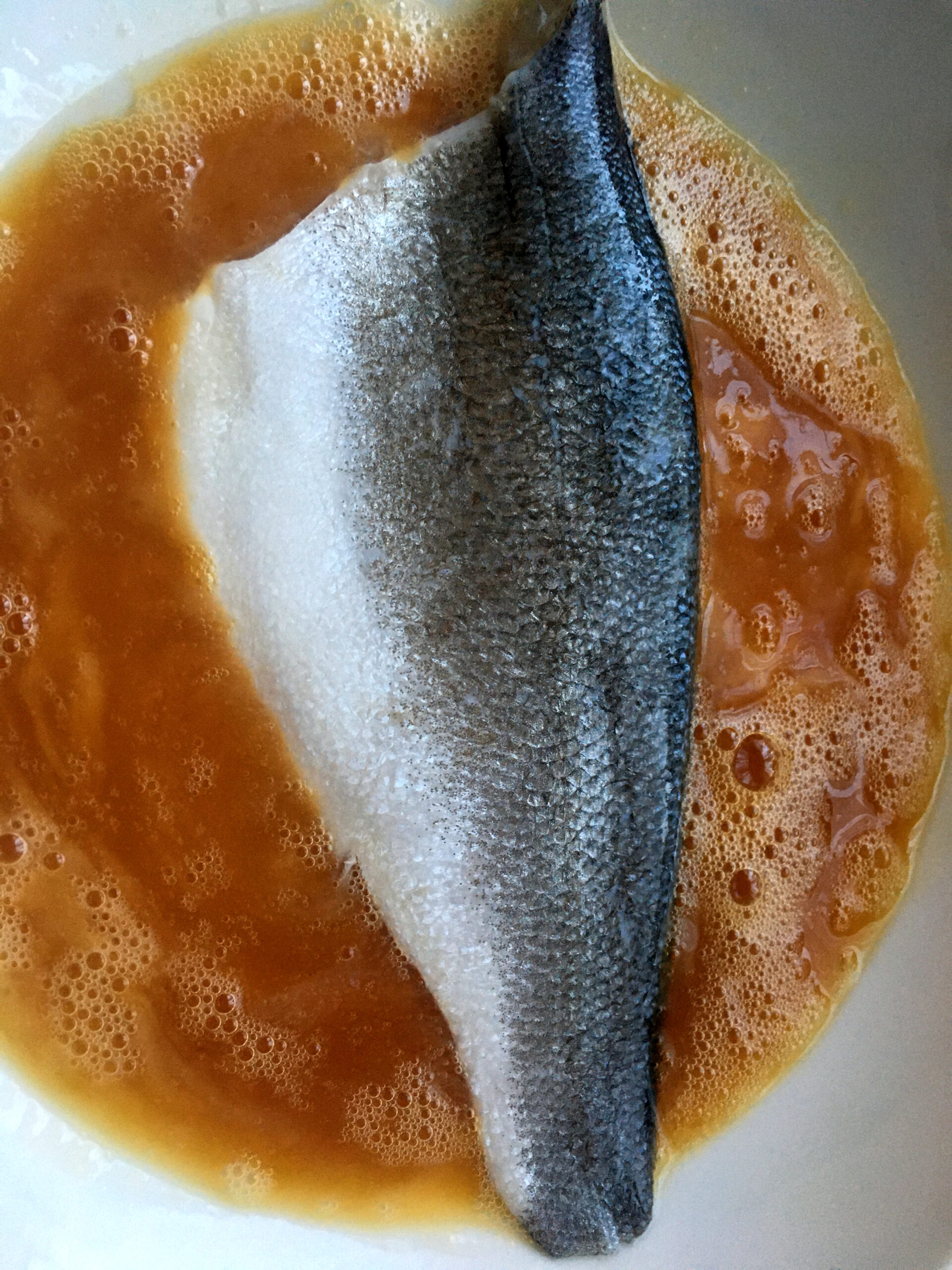
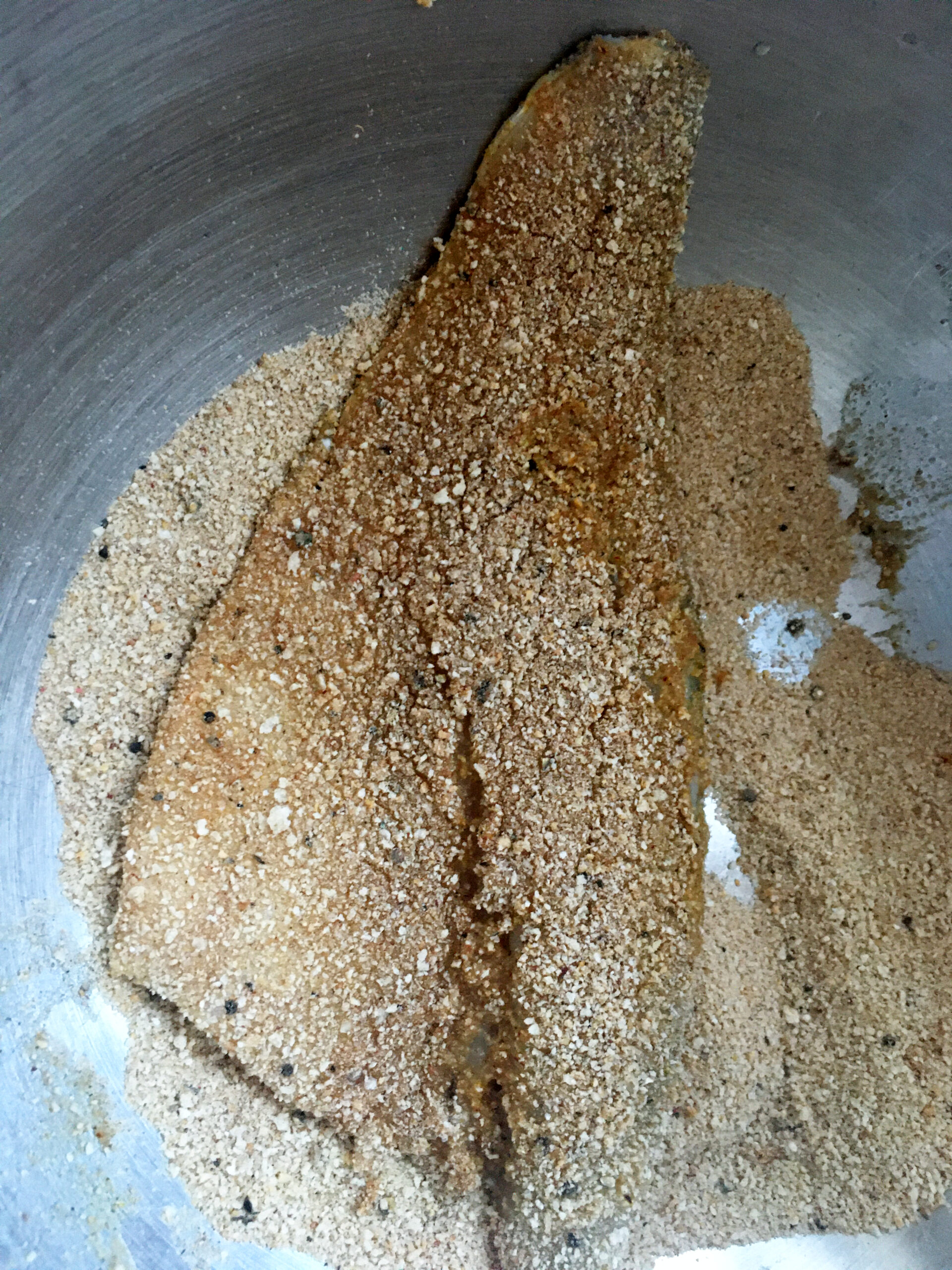
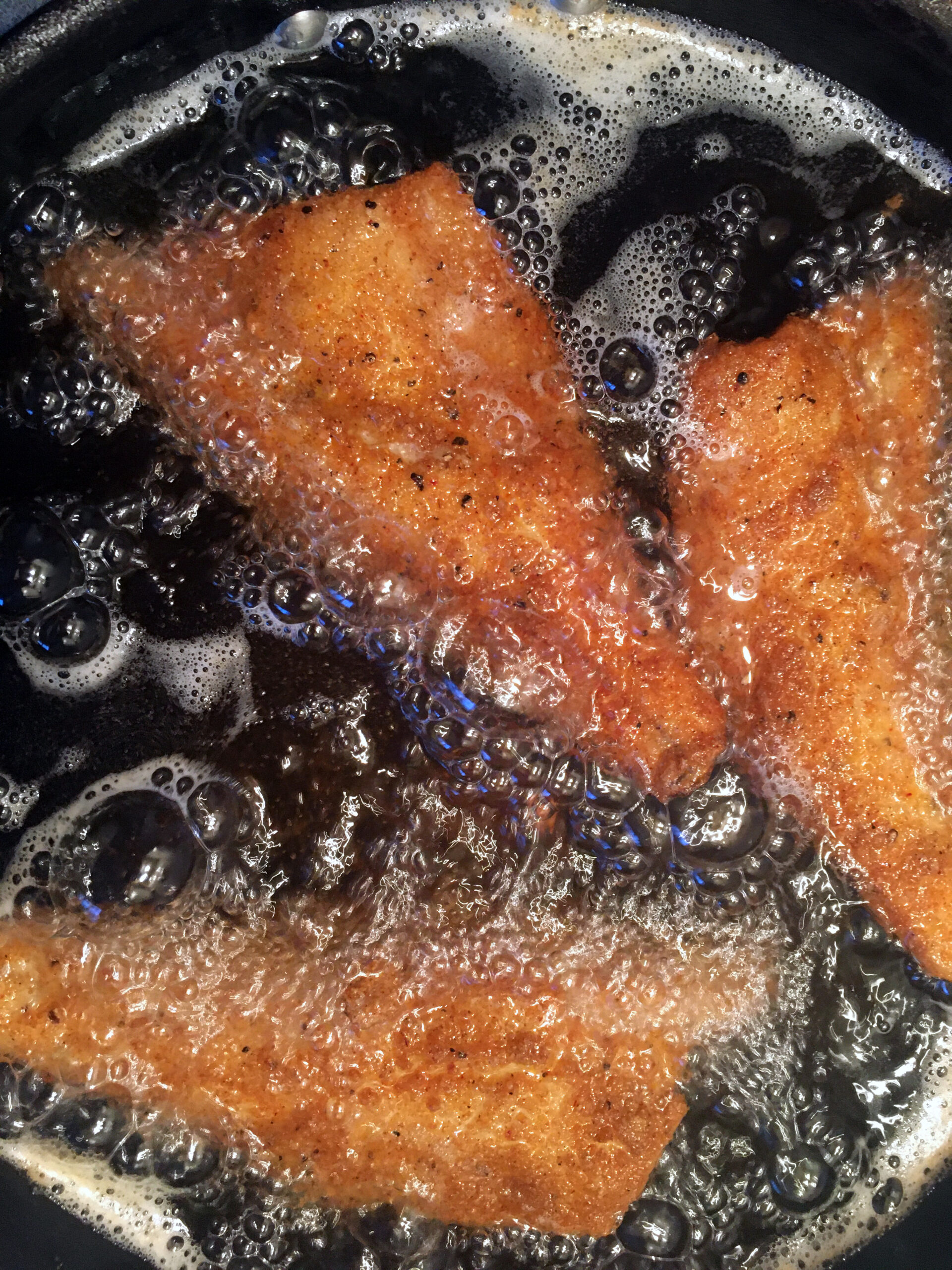
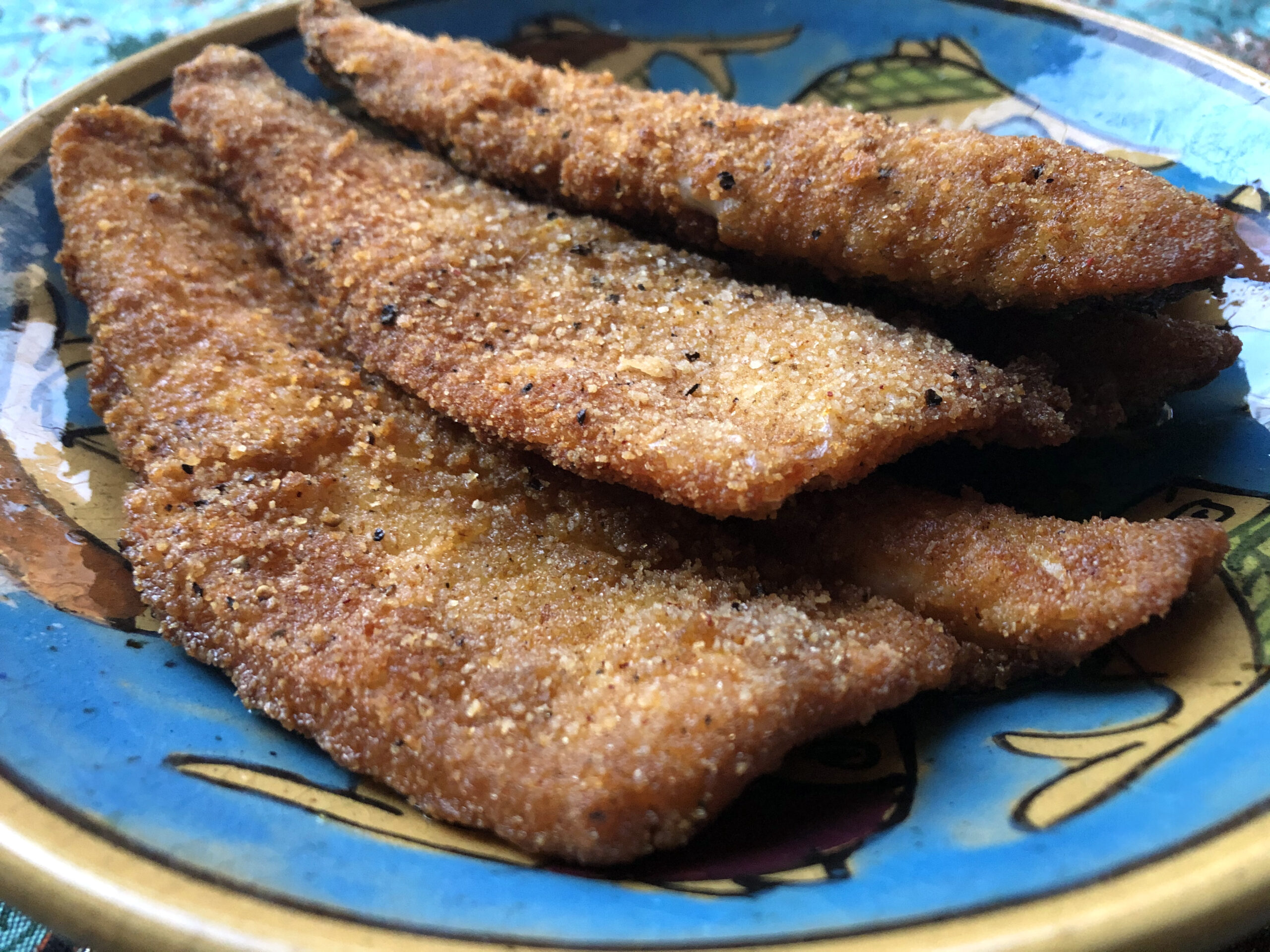
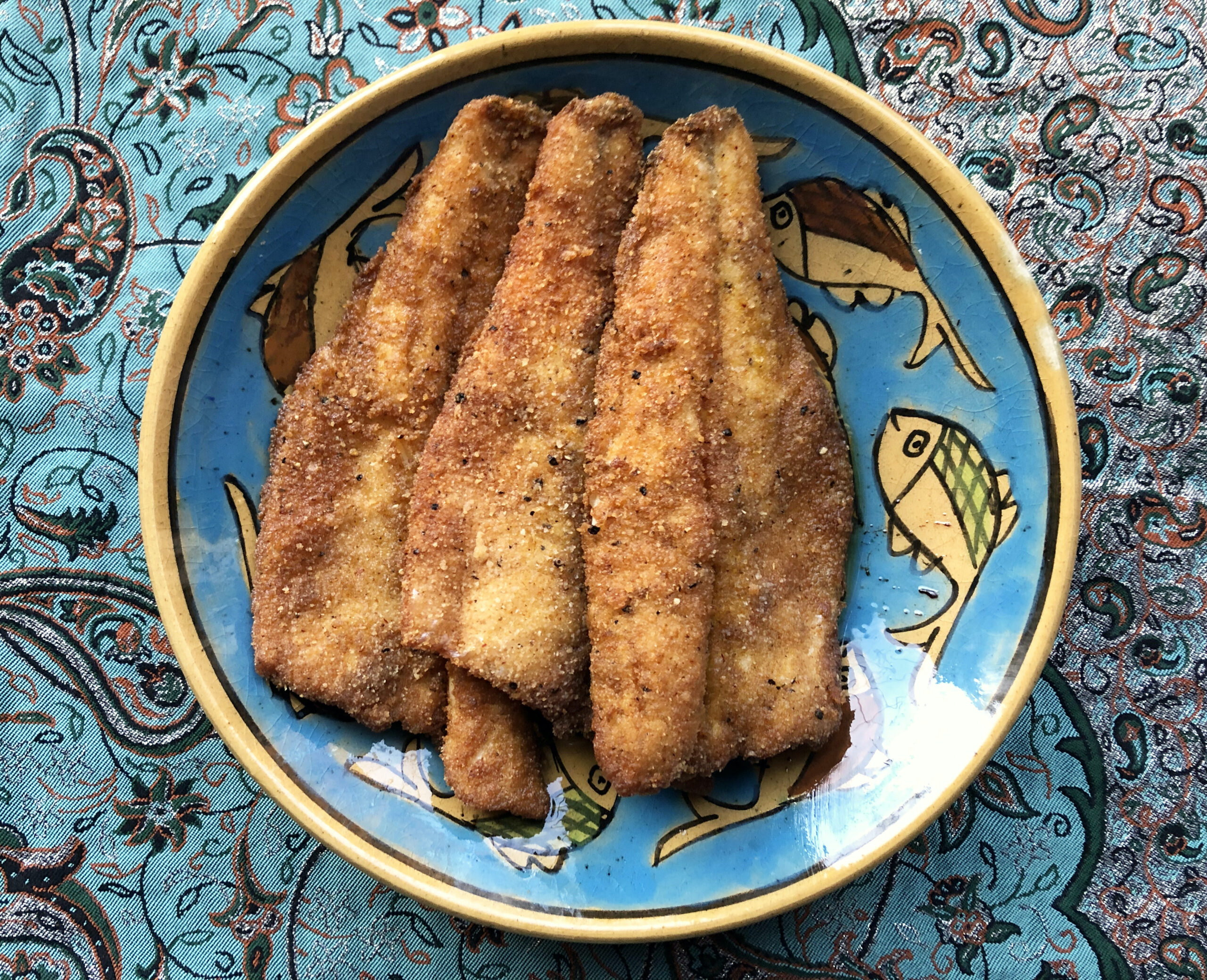
The dish was known as al-Jamalī (الجَمَلِي) and is found only in 13th-century Andalusian and North African treatises. The recipe recreated here is taken from a Tunisian manual, and requires fish to be left overnight covered in salt. On the day of cooking, it is washed and dried, before layering into a tajine (shallow earthenware stewing pan). The other ingredients include vinegar, murrī, pepper, saffron, ginger, cumin, mastic, celery seeds, citron leaves, laurel leaves, fennel, thyme, garlic and a lot of olive oil. Place in the oven until the liquid has dried and the top has turned golden brown. It goes wonderfully well with couscous or with some fresh flatbread!
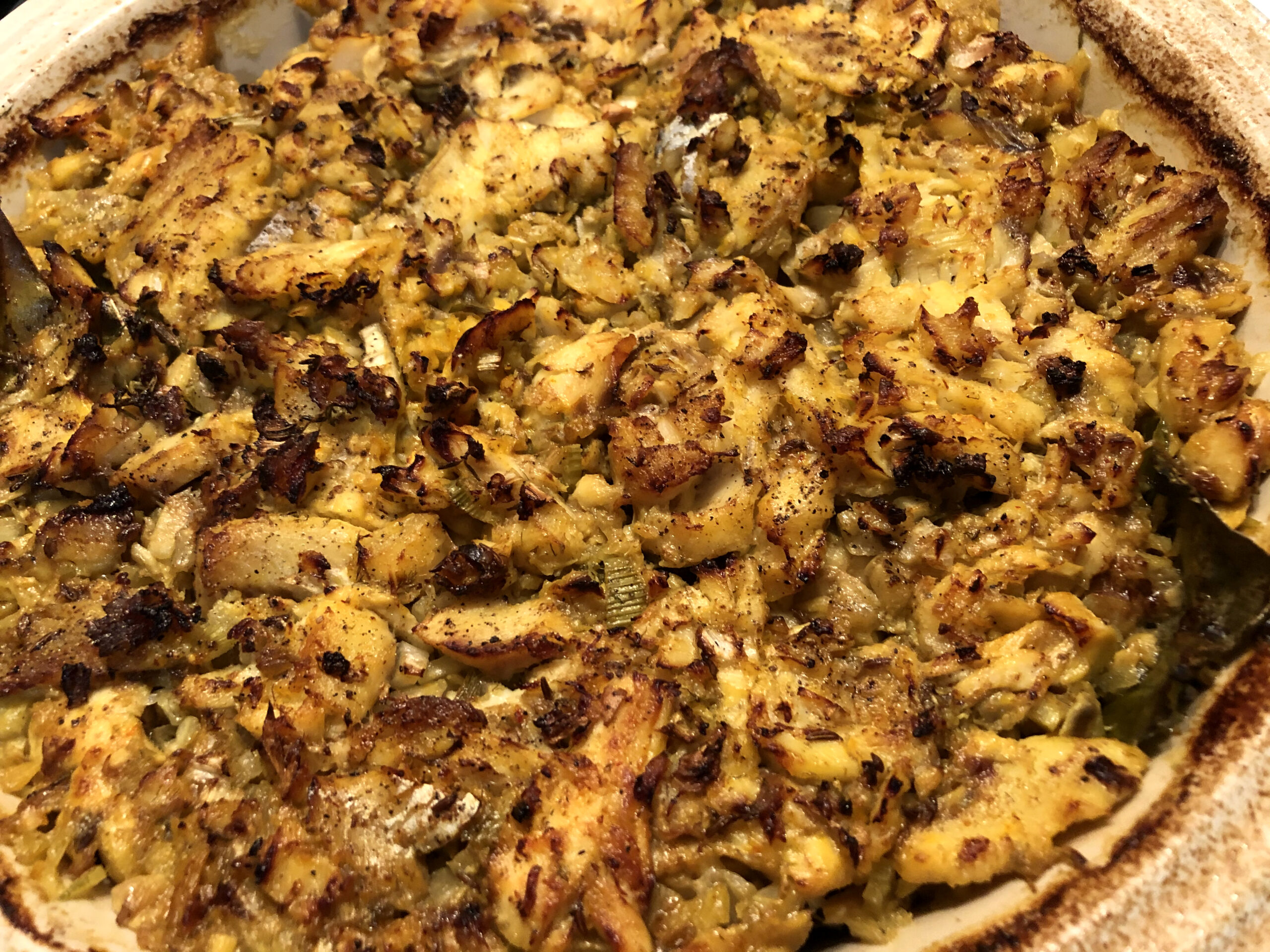
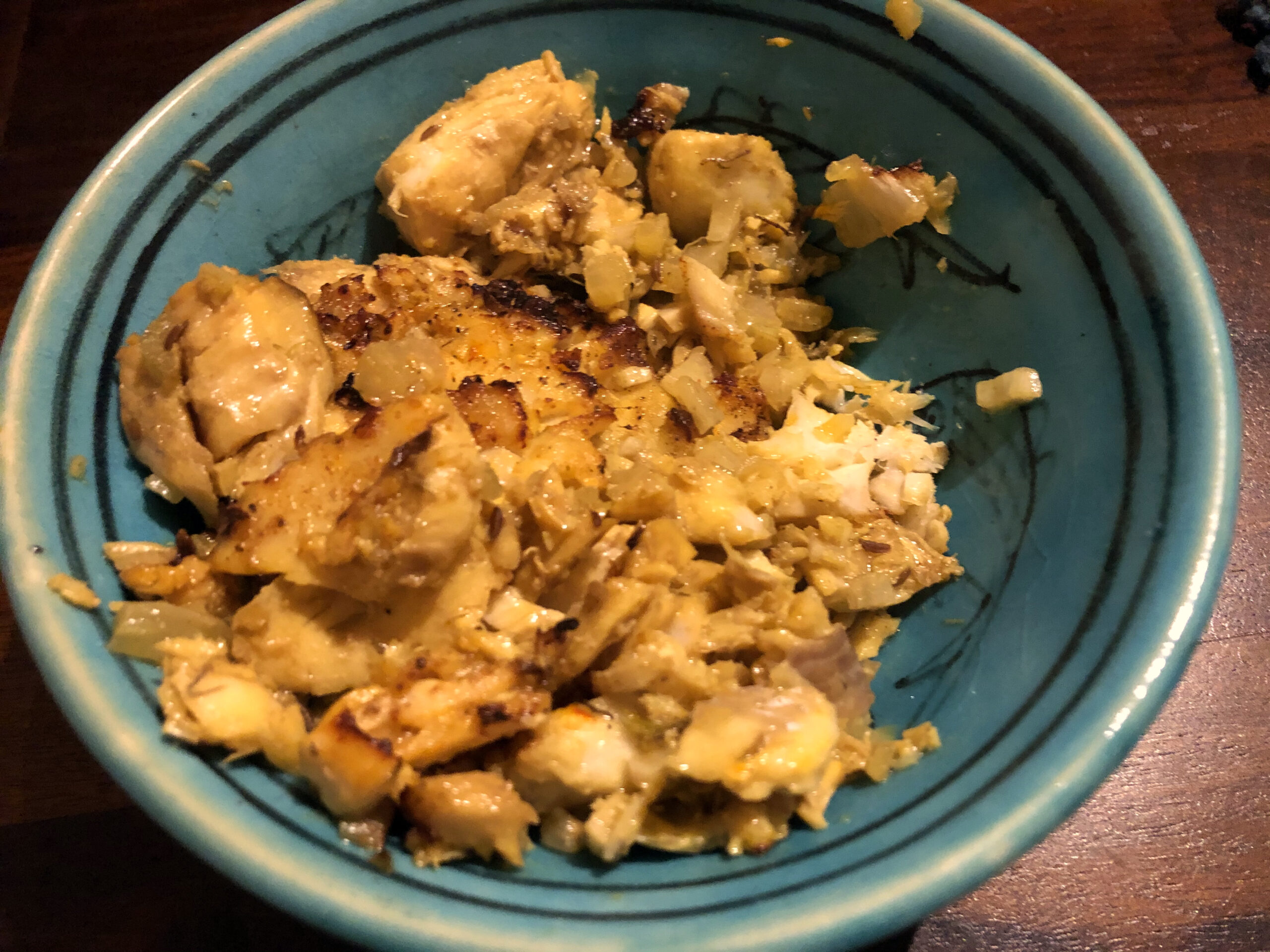
ِAn exceptionally delicate fish tajine with fennel from 13th-century Andalusia. It takes its name from the Andalusian and North African Arabic word for fennel. After boiling the fish, it is immersed in fresh fennel juice, to which onion juice, pepper coriander and ginger are added. Then, it is cooked in the oven until done. It is found in both the Anonymous Andalusian cookbook and that by al-Tujībī.
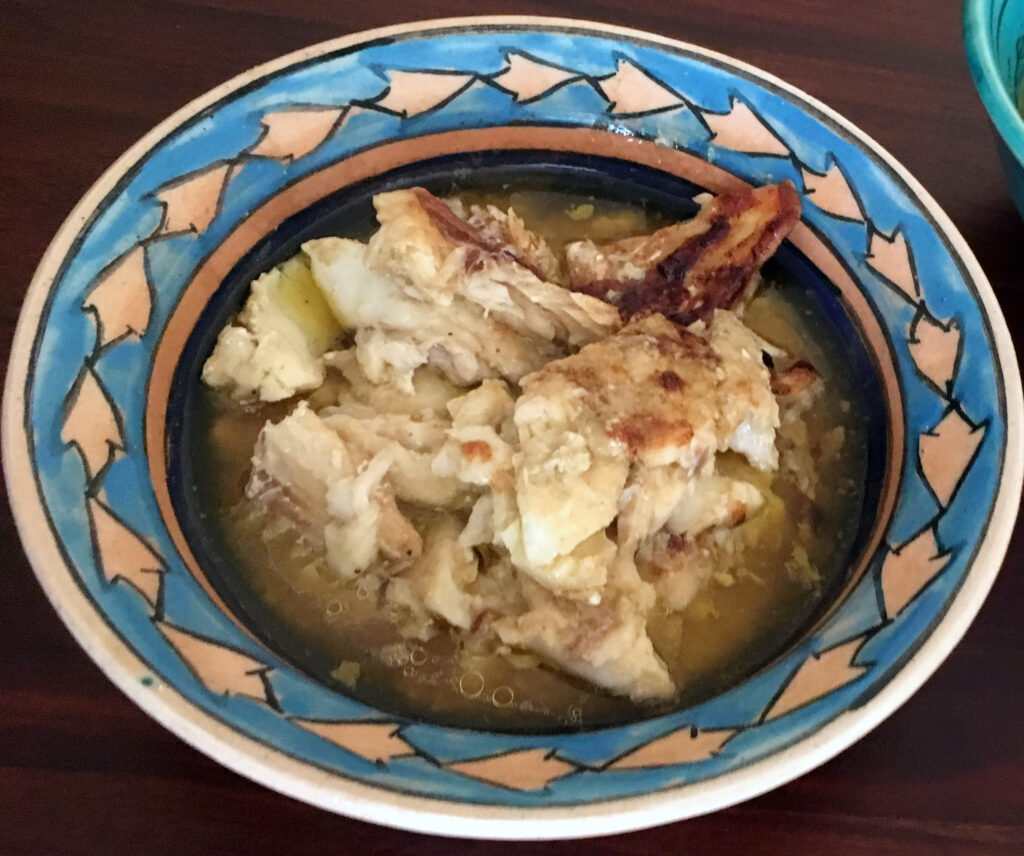
This is one dish that is guaranteed to wow your guests as much as it did the tenth-century Baghdadi chef! As with many things, its genius lies in its simplicity. The principle is to cook fish in three different ways simultaneously; the head is roasted (mashwī), the centre poached (maṭbūkh), and the tail fried (maqluww). But that is not all! The fish is also stuffed with a rich filling fish, salt, eggs, honey, a variety of herbs and spices (among them spikenard, cloves, ginger, cumin, rue, coriander) and olive oil. To complete the package, citron leaves, apple peel, salt, thyme and rue are put inside the mouth of the fish. And for the main event thick cloth soaked in water is wrapped around the centre of the fish, with the lower part bandaged with linen also soaked in oil. Cook in a pre-heated oven until it is done. Remove the wrapping before serving (with three sauces, one for each part of the fish!). This is a dish that travelled beyond the Arab world very early on as a very similar recipe is found in the Vivendier, a 15th-century French cookery manual .

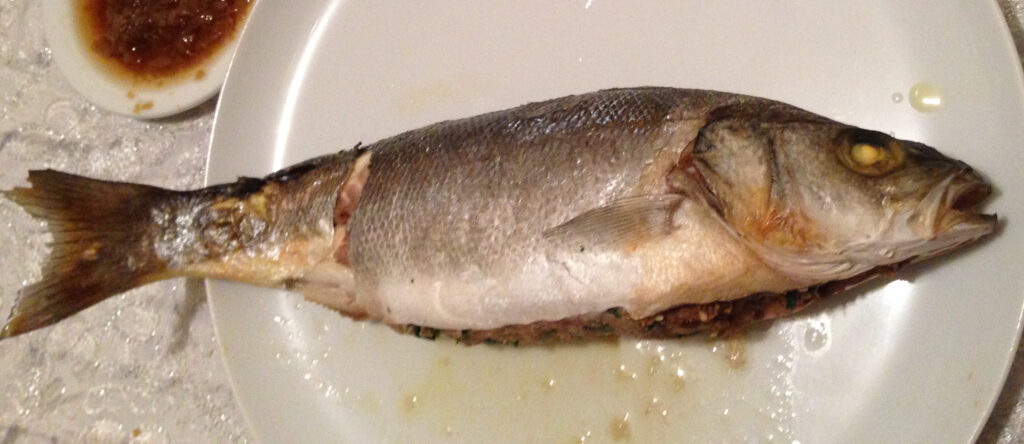
A wonderful 10th-century Baghdadi recipe made with a filling of shrimp, taro root, onion and spices stuffed inside thin sheets of bread fried in olive oil. Complement with soya sauce on the side for dipping. A great snack, or light lunch or dinner!

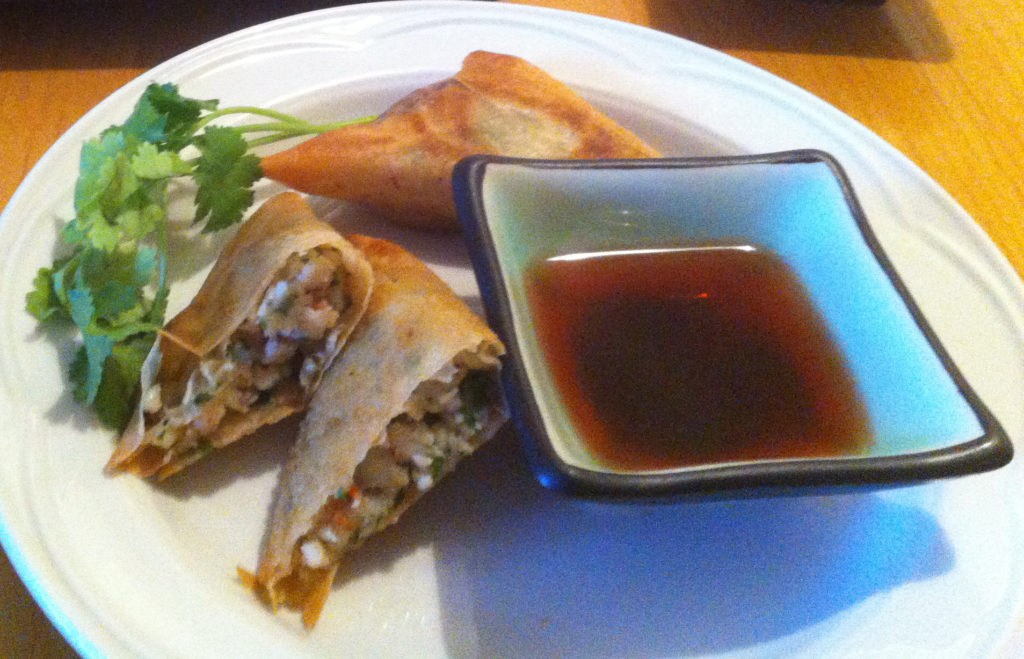
This recipe from 15th-century Egypt requires coating fish with coriander, caraway and flour before frying it in a pan. The sauce, which is cooked separately, is made with the following ingredients: carrots, sumac, coriander, thyme, garlic, pepper, chopped up salted lemons, and celery. [Ibn Mubārak Shāh, fol. 18r.]
